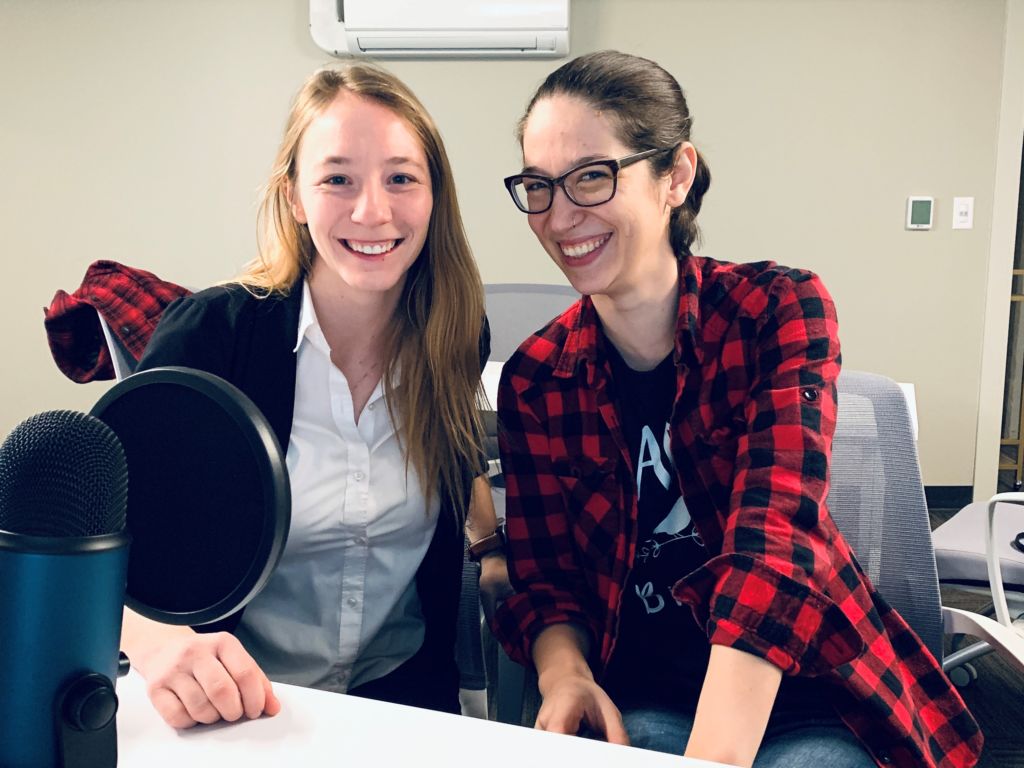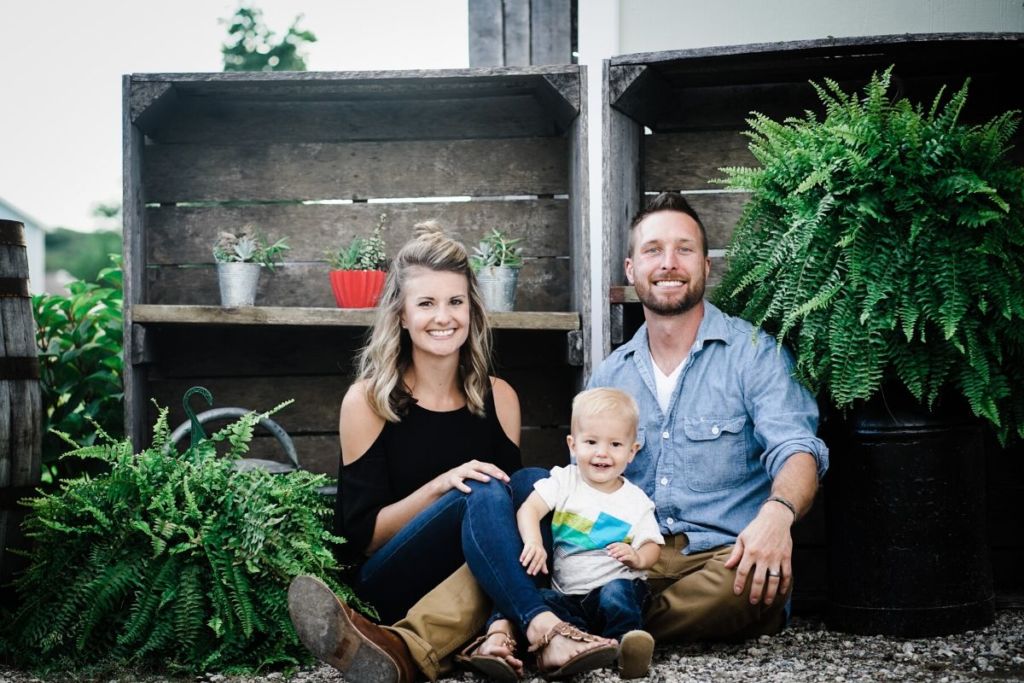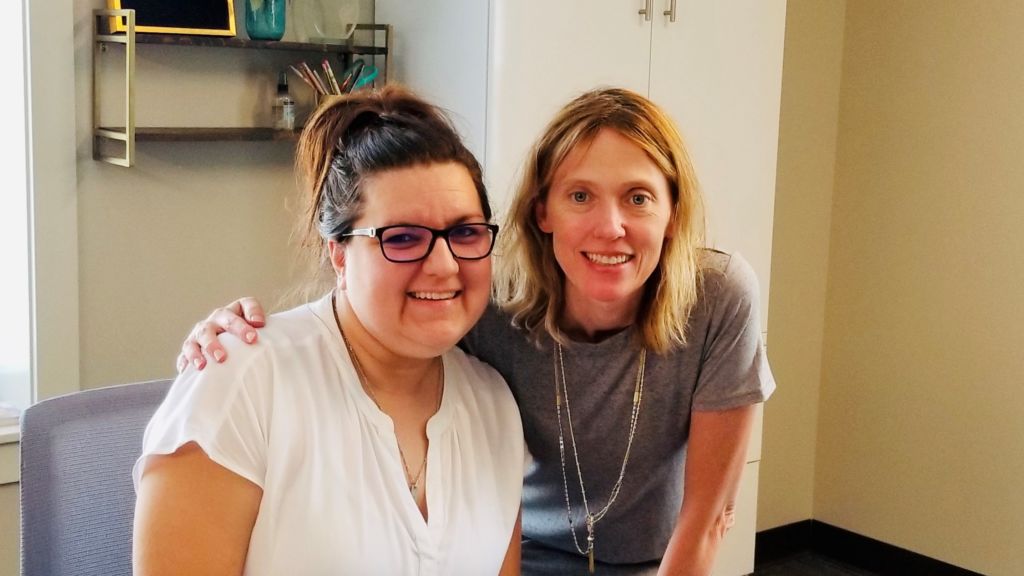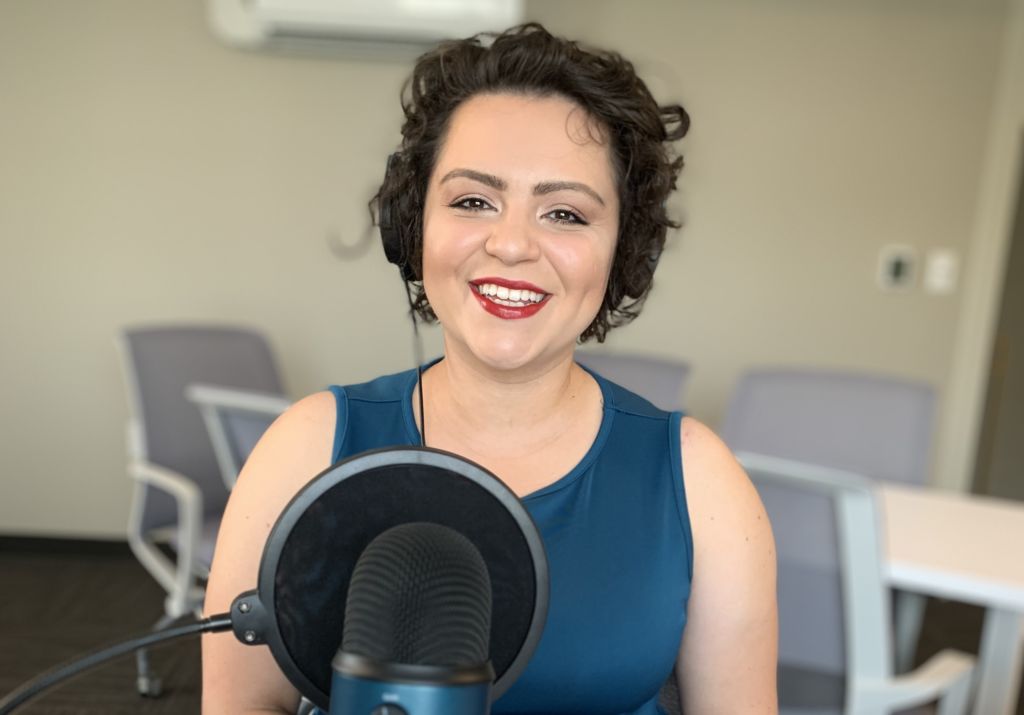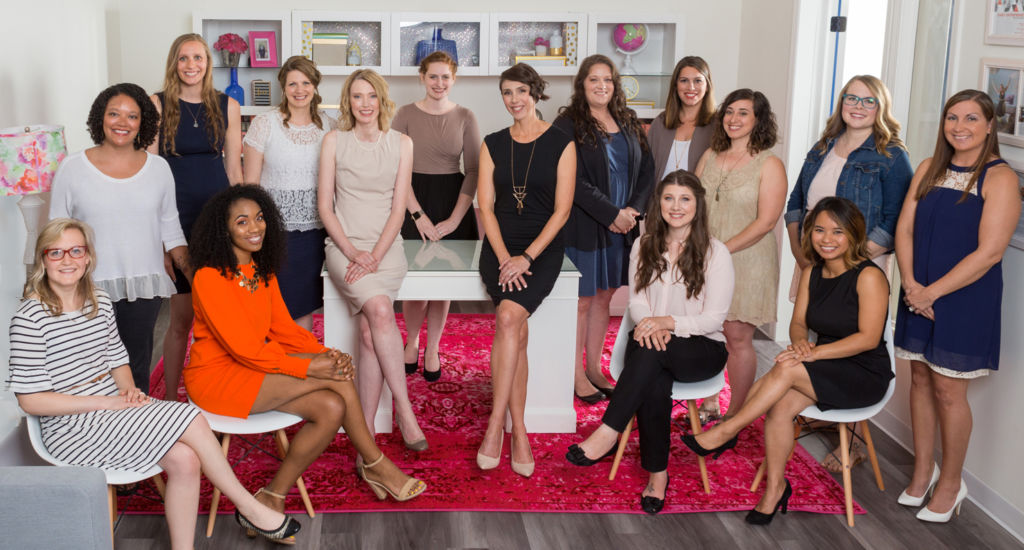Birth Photography: Podcast Episode #92
Photographers Kris and Autumn of The People Picture Company answer questions about birth photography, what a photographer actually does in the delivery room and how the process works for hiring a photographer and talking about birth plans. You can listen to this complete podcast on iTunes or SoundCloud.
Alyssa: Welcome to the Ask the Doulas podcast. I am Alyssa Veneklase.
Kristin: And I’m Kristin Revere.
Alyssa: We are co-owners of Gold Coast, and we are here today with Autumn and Kris from The People Picture Company. We wanted to bring you in because you do a lot of birth photography and a lot of our clients use you, but I know a lot of people are cautious or maybe don’t understand quite what the role of a photographer is in the delivery room, and I think it might be weird for people to say, you know, there’s going to be this stranger with a camera photographing my private parts. Like, I don’t know this person! Can you ease people’s fears and maybe tell us what the whole process looks like?
Kris: Of course! It all starts with a prenatal consult. So this is where we get together and discuss your birth plan and what you want your birthing experience to look like. This helps give us an idea; like, okay, are you doing a hospital birth or a home birth or a birthing center? All of these things kind of factor into it. We exchange phone numbers and all the information there, too, and then pick packages. But it’s really a time for us to get together and to get to know each other because it is a very personal, private, intimate experience, and we’re going to be there with you, so we want to be able to know you and have you be comfortable with us.
Kristin: It’s almost like when you do weddings and you have a shot list. In your prenatal, I’m sure you go over, okay, this is what’s acceptable, and this is what I don’t want.
Kris: Exactly. We also go through and we show off some of the other births that we’ve done that the mothers have completely agreed that it is okay for us to show. We have a couple of photos on our website, if you go into Maternity and Birth. But when we go into a consult, you get to see a little bit more in depth. These are ones that are, like, you know, actually during the birth experience. So sometimes there’s nudity because you might get really hot when you’re giving birth to your child. Sometimes people want that crowning photo. I’m not going to put that online, but if you want to see what that looks like or a photo of your placenta where your baby lived for a while, then I can show you those during the consult so you get more of an idea and a feel of what you can expect from your birth photos.
Alyssa: So it’s kind of like, if I were to say I want birth photos, but I don’t want any shots of boobs; I don’t want any shots of vaginas; I don’t want a butt. Then you would know that going in, saying, okay, we need to crop this out or I’m not going to…
Kris: Not going to photograph it. If you want the photos of your child coming into this world but you don’t want that crowning photo, I don’t have to be right where the doctors are. We can be right up by your shoulder. In fact, that’s how it was with my photos. I don’t have any crowning photos of my son coming out, but I have some great photos from over my shoulder, and you can see him just emerging into the world. It’s so magical because you can ever see everyone that’s in the room and my husband and my doctors and everyone, and it’s just so magical. Especially because most of that, I had my eyes shut, and one of my friends was, like, no, open your eyes. Open your eyes! You have to see this moment!
Autumn: I think a part of it, too, is during the consult, you are getting comfortable with each other, and there’s a moment where you kind of think past the nudity, you know? We’re basically capturing the emotional experience between you, your baby, your family. That is something that is bigger than the nudity sometimes.
Alyssa: Right!
Kristin: And I love that you’ve also supported surgical births and shown the beauty of that as they’re getting prepped to go into the operating room and so on. Some of those pictures are amazing.
Kris: Yeah! With the Cesarean births, we’re not allowed in the operating room for those, but we are allowed in the prepping areas and as you’re walking down the hallway or being wheeled into the operating room, we can do all of that and we can do the couple of hours after the birth, as well. It’s just that for those we’re not actively allowed in those rooms for the surgical process.
Kristin: I’ve loved attending births with The People Picture Company because you really do capture the emotions of the couple and the intimate experience that they have, as well as, obviously, meeting their new baby or babies for the first time and really, you have a way. That’s why we have you photograph our team and a lot of the events we do. You really capture that moment so perfectly and the beauty of birth, the raw and realness of all of it.
Autumn: And no birth is the same, no two births.
Kris: No. But they’re all emotional. I cry at every one.
Kristin: For sure. They are. It’s an honor to be in someone’s birth space. I don’t take that lightly as a doula.
Alyssa: So you’re essentially on call; that’s why you exchange numbers. So how does that work from your client’s end? You exchange phone numbers, and then when the due date approaches, you just kind of — they know that your phone’s going to be on next to the bed all night?
Kris: Yep. My phone is on next to my bed all night. It is turned up as loud as it possibly can be, and in case I’m asleep, my husband is a very light sleeper, so if he hears it, he’s definitely going to be waking me up.
Autumn: You’re pretty amazing. You wake up, and you’re there, and it’s magical.
Kris: It’s so funny because almost all the births that I’ve been on have been in the middle of the night where we’re getting a call. Hey, we’re starting to have some contractions. Okay, great. Keep us informed. Let us know when your water breaks, and we’ll be there, wherever you’re going to be having your birth. We’re very flexible, so if you were originally going to be doing a home birth and then something is weird and you need to go to the hospital, then just have someone let us know. It doesn’t matter who it is. Just put our number in your birth plan, and we’ll be there.
Alyssa: That’s what a doula’s good for. We can call you and let you know. By the way, we’re headed to the hospital.
Autumn: And the greatest part is we have a whole team, so during that time when Kris is on call and she needs to be ready whenever, anything that she has going on, we’re there to kind of help take care of that so we free up her time to be available to be at the birth no matter what.
Kris: Yeah. I block off your due date for sure. That entire day is completely reserved. I won’t schedule anything. And then for a week or so before and a week or so after, because babies come when they want to come, I have those listed as on-call, which means that if someone else needs to take one of my other sessions that I have prebooked because you’re going into labor at that point, then they have that. I have a bag packed and with me wherever I am, so I am ready to go and meet you as soon as I get the call.
Kristin: Sounds just like what I do as a birth doula! And most of my calls are in the middle of the night unless it’s a planned birth. Or early morning; I sometimes will get a call. They’ve been laboring at home in early labor, and then they want my support early in the morning.
Kris: Babies just love coming at night.
Autumn: They do!
Kris: My son came right after midnight, and our birth photographer, Bree — she’s one of our team. She actually doesn’t shoot anymore, but she picked up a camera for me. I think I was her last session that she did. And she came — she was so sweet. She came at — oh, gosh. I don’t even know what time. She came pretty early. Probably about 7:00, I think, is when my water broke and everything, and she was there until about 1:00 in the morning when I finally kicked her out. You need to go home; you need to go to sleep. We got our photos; we’re great. We got our few things that we wanted afterwards. Go home and sleep. But that also leads me to the photos of after the birth, like how long we get to stay for that. That’s actually a really good segue there that I hadn’t planned.
Kristin: And I know some clients can hire you just for that first hour or that time of bonding and not the actual labor if their preference is to not be photographed during the birth itself.
Kris: Definitely. It’s still all the same thing. We’re still on call and everything, and the way our packages work, we have two different ones. They both include up to two hours of post-birthing, and that covers the first moments of your child’s life. So if you want us in there for the birth, then that can include the cord cutting and such. If you want us there for the first little bit afterwards, it can include the first time you’re nursing your child if that’s what you end up doing. If you’re doing skin to skin contact; the weight, height, and head measurements, the footprints, and the first family photo of you all together in that blissful moment. And then also if you have any family members that are coming to meet the newest addition, so if you have an older child that’s coming to meet the younger sibling for the first time, or you have some grandparents that are being grandparents for the very first time, we can be there for that, too.
Alyssa: How does it work — let’s say a client gets induced and says, hey, I’m going to the hospital, but then it ends up taking two days. How do you — or have you had a client like that where you’re there for a really, really long time?
Kris: We’ve had one where we’ve been there for —
Autumn: We’ve had to do switch shifts.
Kris: Yeah. I’ve done some switch shifts before where we kind of tag out. Okay, I’ve been here for, like, 12, 13 hours. I need a momentary break. I need a little cat nap, but we don’t want you to have to worry about us missing it. So then we just kind of tag out with one of our other team members, and then we swap for a little bit.
Alyssa: So there’s no price difference?
Kris: No.
Alyssa: It’s just whatever birth you have, whether it’s two hours or two days?
Kris: Yep. Your kid comes in the time when your kid wants to come, and we’ve got to be flexible with that.
Kristin: Right. And even with inductions, there can be some sweet moments where they’re on the birthing ball or moving around the room, and you can capture – again, if it is a couple, you can couple the intimacy with the couple, or if there’s a doula supporting…
Autumn: Well, the greatest part is it’s not just one single moment with the birth. It’s the entire process, and being able to capture that for basically the entire family is so special because we literally see the moments before, where they’re on the ball and they’re trying to get them out, and then they —
Kris: It’s the whole story.
Autumn: It literally is the story.
Kris: And going back to personal experience, I was induced for my son because he was a week late and didn’t want to come. And there are times, because it was a long, emotional, hard birth, that don’t necessarily remember. But because I had my photographer there and I made a book later on, I’m able to remember and to kind of — not necessarily relive, because I don’t remember the pain, thank God, but I do remember the joy, and I remember thinking – like, for me the birthing ball was bad, and all I can remember was saying, “Ball bad! Ball bad!” But I remember that because I have the photo of me with that ball and then the ball completely on the other side of the room because I didn’t even want to see it.
Kristin: Listening to your body is key! That’s what I say. That’s part of it!
Alyssa: So once you get into the labor and delivery room, what does that look like? Are you kind of like a fly on the wall trying to stay out of — like, you don’t want them to even know you’re there, or are you talking to them and —
Kris: It kind of depends on the couple or on the mom and what they want, and this is why we do the prenatal consult. We usually try to help out if we can, like either be a gopher — like, so if mom is really sweating but doesn’t want her partner to leave and needs a wet washcloth or something, then we will do that. If you need some ice chips or something, we can go and do that for you so that your people don’t have to leave, although of course if you have doulas, then they usually end up helping out that way, too. So we help out where we can, but otherwise, it’s usually very intimate, and the couple is pretty much in their own world. We just kind of capture that and stay out of the doctors’ way. After you have your baby, we know that you’re really excited to show the photos of your new little baby to friends and family and all your loved ones, and so instead of sending cell phone photos that can look a little weird, we do sneak peeks so we’ll provide you with a handful of photos that are completely ready to send out to friends and family.
Alyssa: Like the next day?
Kris: Within 24 hours. Usually less than; it’s usually one of the first things that we do when we leave the birthing room.
Autumn: She gets really excited. She gets back to the studio, and she’s, like, “I’m doing this! I’m really excited!”
Alyssa: You always do. Every team photo, you’re, like, okay, give me a couple weeks. And then two days later, you’re like, “They’re ready! I was just too excited. I had to go through them.”
Autumn: Well, I mean, it’s our work, and we get so excited about it, and we can’t wait to show it off because what is the point of just sitting on it when we can share it with everyone?
Alyssa: In my past life, I was a photographer, and it was the same thing. While it’s fresh in my head, I wanted to go through them. It’s exciting to see what you just created. So I get it.
Kris: You’ll get a handful of photos the same day, usually within a few hours, so you can send them out. And then the final photos, we say two weeks, but it’s usually sooner.
Kristin: And certainly, I feel like birth is a major rite of passage, and as wedding photographers, you understand how much time, money, and preparation is involved in planning for that rite of passage, but really, when you look at minor investments in the birth and postpartum time for a family, hiring a birth photographer or doing newborn shots doesn’t even compare to the investment in a wedding photographer, for example.
Kris: Oh, yeah, no. It’s a fraction.
Kristin: Can you explain a bit about what your fees are so people who aren’t familiar with birth photographers — as you talk about being on call and longer lengths and so on?
We have a couple different packages when it comes to the birth, and they each include high-resolution images for you to share, to do whatever you want with. And then you also get an album to create for our highest package, which is a 20-page lay-flat album.
Kristin: You’re saying a digital album?
Autumn: No, a photo album. So you get digital files, high-resolution, and then our highest package, you get a 20-page album to share and have it on your table so you can show it off. And plus like Kris said, you get to relive the moments because sometimes you just don’t remember, and having that printed album is so important because you can’t have all of your images live on digital because you don’t know how long they’re going to last. We always want everybody to print things.
Kris: Which is why we provide you with the high-resolution images, too, because those are good quality for printing. So you’re welcome to print them yourself or you can print with us. We have a la carte print packages, too. So the first package, like Autumn was saying, it’s $850. It includes everything: the prenatal consult, the on-call availability, the two hours after birth, and then 100 or more, however many, high-resolution images, and a 20-page 5×5 print photo album. And then our second package, which is our base package, is $500, and that includes 30 to 50 high-resolution images, so that’s if you need just a little bit; just a little reminder, not the whole big coverage of everything. And then because we want to see you guys again and provide you with a really good first family photo that’s not right after birth, we include 10% off your newborn session if you get either of these two packages because, yeah, your first family photo — yeah, it’s great to have one in the hospital, but let’s get one where your hair and makeup are actually done, too.
Kristin: And I know you do documentary-style or more of the posed family shots, depending on preference and price and so on?
Autumn: Absolutely. We actually prefer doing newborn sessions in the home because it’s where you’re going to be the most comfortable, and then you also don’t have to worry about packing up the family and moving them to our studio, which can be a hassle sometimes. Our goal is to make everything hassle-free, so we come to you, and we can document your entire family as you are, and we can also get some posed shots that would be printed and put on the wall. The documentary style also work well if you do an album. Plus, it’s more realistic. It’s you in your zone. It’s where your family is. And if you have other kids, it’s also really fun to see how they interact with the baby, also.
Kris: Some of the documentary ones that we’ve done are within your nursery, so if you’re changing your baby on the table or nursing them in a rocking chair or something like that and then you get a photo of the entire nursery in this environmental setting, too.
Kristin: It’s nice. You did that with a twin client of ours.
Kris: Yeah. They were so sweet. They were adorable, and we had grandma in there, too.
Alyssa: So if anyone is interested in birth photos or family photos or baby photos —
Kristin: Or maternity photos.
Alyssa: Yeah, maternity photos — what’s the best way for them to reach out?
Kris: Probably our website would be the best. We have all our packages listed on there.
Kristin: And you also have a page on the Gold Coast Doulas website.
Kris: We do, so you can just go to the Gold Coast Doulas website and go into Birth Photography and find us that way, too. And then we have all of our packages listed and a handful of images to show you, just kind of a portfolio of examples to see if we’re your flavor of photographer or not.
Autumn: And the best way to find out is just reaching out and setting up a consult to get to know us, really.
Kris: Yeah. You can do that straight from the website. We have contact boxes. You can email us.
Alyssa: And probably depending on the time of year, as long as it’s not wedding season, you could do it last minute. Like, hey, I’m 38 weeks and I just decided I want a photographer.
Autumn: Oh, absolutely.
Alyssa: As long as you’re not in the throes of wedding season, you might be able to say yes?
Kris: You know, as long as you’re not a Friday or Saturday, chances are really high.
Alyssa: Cool. Well, thanks for joining us. Is there anything else that we didn’t cover?
Autumn: I did want to point out that another thing after birth – one of our favorite things to do is follow you through the first year. What we have is a package that basically is dedicated to capturing your baby at several stages in the first year. So then you can do the three, six, nine months and then the one year, so you can also print that out and get it on the wall to see how much they’ve grown.,
Kris: They change so much in that first year.
Autumn: They really, really do. It’s amazing. They go from literally —
Kris: Tiny squishes to little humans.
Autumn: Yeah. It’s amazing. And it’s really fun for us, especially somebody like Kris who’s there during the birth, probably the maternity session, and after with the newborn, and then we get to follow you through and literally watch your family grow. It is so much fun.
Kris: It’s awesome watching them grow.
Autumn: Yeah. Because our goal is to become lifelong friends, not just the photographer one day.
Kris: Yeah. We want to get to know you and become friends and tell your story.
Kristin: I love that.
Alyssa: That’s cool. Thanks!
Birth Photography: Podcast Episode #92 Read More »


